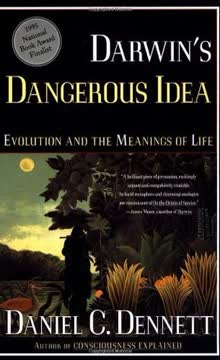Key Takeaways
1. Darwin's Idea: A Universal Acid
Darwin's dangerous idea cuts much deeper into the fabric of our most fundamental beliefs than many of its sophisticated apologists have yet admitted, even to themselves.
Darwin's dangerous idea. Darwin's theory of evolution by natural selection is not just a scientific theory; it's a philosophical revolution that challenges our most basic assumptions about the meaning of life, purpose, and the nature of reality. It acts as a "universal acid," dissolving traditional concepts and forcing us to re-evaluate our cherished beliefs.
Challenging the status quo. The theory's implications extend far beyond biology, impacting our understanding of cosmology, psychology, human nature, and ethics. It forces us to confront uncomfortable truths about our origins and our place in the universe, leading to resistance and controversy.
The algorithmic nature of evolution. Darwin's idea presents evolution as an algorithmic process, a mindless, mechanical procedure that can generate complexity and design without the need for a divine creator or intelligent intervention. This algorithmic perspective is a key element of Darwin's dangerous idea, as it challenges the traditional "Mind-first" view of the universe.
2. Teleology Transformed: From Divine to Algorithmic
One of Darwin's most fundamental contributions is showing us a new way to make sense of "why" questions.
The problem of "why." Before Darwin, teleological explanations, which explain the existence of something by citing its purpose or goal, were dominant. Aristotle's four causes, particularly the "final cause" or telos, were central to understanding the world.
Darwin's inversion. Darwin's theory offers a new way to understand "why" questions by explaining the origin of design through a mindless, algorithmic process. This process, natural selection, acts as a "Nonintelligent Artificer," creating adaptations over vast amounts of time.
The end of the Prime Mover. Darwin's idea challenges the traditional view of God as the ultimate source of all design and purpose. It suggests that complex systems can arise from simpler, non-teleological processes, undermining the need for a Prime Mover or Intelligent Designer.
3. Design Space: The Vast Expanse of Possibilities
The Darwinian mutation, which at first seemed to be just a new way of thinking about kinds in biology, can spread to other phenomena and other disciplines.
The concept of Design Space. To understand evolution, we must visualize a vast, multidimensional space where every possible design for an organism or artifact exists. This space is not uniform; some regions are more accessible or "fitter" than others.
Evolution as exploration. Evolution can be seen as a process of exploring Design Space, with natural selection acting as a force that guides organisms towards regions of higher fitness. This exploration is not directed or purposeful but rather a blind, algorithmic process.
The role of chance and necessity. The actual path taken by evolution through Design Space is a product of both chance (random mutations) and necessity (the constraints imposed by physics, chemistry, and the environment). This interplay of chance and necessity shapes the diversity and complexity of life.
4. The Tree of Life: A History of Design
The fundamental core of contemporary Darwinism, the theory of DNA-based reproduction and evolution, is now beyond dispute among scientists.
The branching pattern of life. The Tree of Life is a visual representation of the evolutionary history of all living things, showing how species have diverged and adapted over time. This branching pattern is a key feature of evolution, as it reflects the process of descent with modification.
The importance of extinction. Extinction plays a crucial role in shaping the Tree of Life, as it eliminates less successful designs and creates opportunities for new species to emerge. The fossil record provides evidence of past extinctions and the subsequent diversification of life.
The role of symbiosis. Symbiosis, the close interaction between different species, has also played a significant role in shaping the Tree of Life. The eukaryotic revolution, in which some bacteria-like prokaryotes invaded the membranes of other prokaryotes, is a prime example of symbiosis leading to major evolutionary innovation.
5. The Power of Natural Selection: Cranes, Not Skyhooks
What limit can be put to this power, acting during long ages and rigidly scrutinising the whole constitution, structure, and habits of each creature,—favouring the good and rejecting the bad?
The limitations of skyhooks. Skyhooks are miraculous lifters, unsupported and insupportable, representing supernatural or non-natural explanations for the origin of design. Darwin's theory rejects skyhooks in favor of natural, mechanistic explanations.
The power of cranes. Cranes are subprocesses or special features of a design process that can be demonstrated to permit the local speeding up of the basic, slow process of natural selection, and that can be demonstrated to be itself the predictable (or retrospectively explicable) product of the basic process. Examples include:
- Sex
- Genetic engineering
- The Baldwin Effect
The algorithmic nature of natural selection. Darwin's dangerous idea is that the algorithmic level is the level that best accounts for the speed of the antelope, the wing of the eagle, the shape of the orchid, the diversity of species, and all the other occasions for wonder in the world of nature.
6. The Selfish Gene: A New Perspective on Altruism
A grain in the balance will determine which individual shall live and which shall die,—which variety or species shall increase in number, and which shall decrease, or finally become extinct.
The gene's-eye view. The selfish gene theory, popularized by Richard Dawkins, suggests that genes are the primary units of selection, and organisms are merely vehicles for their replication. This perspective helps explain the evolution of altruism and other seemingly paradoxical behaviors.
Kin selection and inclusive fitness. Altruistic behaviors can evolve if they benefit the genes of related individuals. This is known as kin selection, and it can be quantified using the concept of inclusive fitness, which measures the reproductive success of an individual's genes, both directly and indirectly.
Reciprocal altruism. Altruistic behaviors can also evolve between unrelated individuals if there is a reasonable expectation of reciprocation. This is known as reciprocal altruism, and it can be modeled using game theory.
7. Memes: The Replicators of Culture
Origin of man now proved. — Metaphysics must flourish. — He who understands baboon would do more towards metaphysics than Locke.
- Darwin
The concept of memes. Memes are units of cultural information, such as ideas, beliefs, and behaviors, that are transmitted from one individual to another through imitation and learning. They are analogous to genes, but they operate in the realm of culture rather than biology.
Memetic evolution. Memes undergo a process of evolution similar to that of genes, with variation, replication, and selection. Successful memes are those that are most effective at spreading and persisting within a culture.
The power of memes. Memes can have a profound impact on human behavior and culture, shaping our beliefs, values, and social norms. They can also influence the direction of genetic evolution, as cultural practices can create new selection pressures on our genes.
8. The Evolution of Morality: From Selfishness to Ethics
I am inclined to look at everything as resulting from designed laws, with the details whether good or bad, left to the working out of what we may call chance.
- Darwin
The problem of morality. How can we reconcile the selfish nature of genes with the existence of altruism and morality in human societies? Evolutionary theory suggests that morality is not a divinely ordained code but rather a product of natural selection and cultural evolution.
The role of cooperation. Cooperation is essential for the success of human societies, but it is also vulnerable to exploitation by cheaters. Evolutionary mechanisms, such as kin selection and reciprocal altruism, can help promote cooperation and punish defection.
The influence of culture. Cultural evolution plays a crucial role in shaping our moral values and norms. Memes for cooperation, fairness, and empathy can spread through a society, creating a moral framework that transcends individual self-interest.
9. The Human Mind: A Product of Memetic Infestation
We are built as gene machines and cultured as meme machines, but we have the power to turn against our creators.
- Dawkins
The mind as a meme nest. Human minds are not simply products of genetic evolution; they are also shaped by the memes that inhabit them. Memes can alter the structure and function of our brains, influencing our thoughts, beliefs, and behaviors.
The power of language. Language is a key factor in the evolution of human minds, as it allows us to transmit and share complex ideas and information. Language also enables us to engage in abstract thought, reasoning, and planning.
The limits of reason. While human minds are capable of great feats of intelligence and creativity, they are also subject to cognitive biases and limitations. These biases can be exploited by memes, leading to the spread of misinformation and harmful ideologies.
10. The Future of Darwin's Idea: Biodiversity and Beyond
I would give absolutely nothing for the theory of Natural Selection, if it requires miraculous additions at any one stage of descent.
- Darwin
The importance of biodiversity. Biodiversity is essential for the health and stability of ecosystems, and it also provides a valuable source of genetic and cultural diversity for future generations. Preserving biodiversity is a moral imperative, as it ensures that we do not foreclose future possibilities for life on Earth.
The dangers of universal acid. Darwin's dangerous idea, like universal acid, has the potential to dissolve traditional values and beliefs. However, by understanding the power and limitations of Darwinian thinking, we can harness its insights to create a more meaningful and sustainable future.
The ongoing evolution of Darwin's idea. Darwin's theory of evolution is not a static dogma but rather a dynamic and evolving framework for understanding the natural world. New discoveries and insights continue to refine and expand our understanding of evolution, ensuring that Darwin's dangerous idea remains a powerful force for intellectual progress.
Last updated:
FAQ
1. What is "Darwin's Dangerous Idea" by Daniel C. Dennett about?
- Central theme: The book explores Charles Darwin’s theory of evolution by natural selection as a mindless, algorithmic process that explains the complexity and design of life without invoking supernatural causes.
- Interdisciplinary scope: Dennett applies Darwinian thinking across biology, philosophy, mind, culture, and morality, arguing for its universal explanatory power.
- Philosophical challenge: The book confronts traditional beliefs about purpose, design, and mind, showing how Darwin’s idea revolutionizes our understanding of life and meaning.
- Algorithmic process: Dennett emphasizes that natural selection is a mechanical, step-by-step process capable of producing minds, meanings, and morality.
2. Why should I read "Darwin's Dangerous Idea" by Daniel C. Dennett?
- Comprehensive synthesis: The book offers a deep, interdisciplinary integration of evolutionary theory with philosophy of mind, language, and ethics.
- Clarifies misconceptions: Dennett addresses and dispels common misunderstandings about evolution, artificial intelligence, and the nature of meaning.
- Engages with critics: He critically examines opposing views from leading philosophers and scientists, providing clear arguments and thought experiments.
- Practical implications: The book discusses the evolution of morality and ethical decision-making, offering insights into how evolutionary thinking can inform our values.
3. What are the key takeaways from "Darwin's Dangerous Idea" by Daniel C. Dennett?
- Darwin’s idea is universal: Natural selection is a powerful, mindless algorithm that explains not only biological evolution but also the emergence of mind, culture, and morality.
- No need for skyhooks: Complex design and meaning arise from natural processes (“cranes”), not miraculous interventions (“skyhooks”).
- Meaning and morality evolve: Meaning, intentionality, and ethics are not fixed or intrinsic but emerge gradually through evolutionary and cultural processes.
- Challenges to tradition: The book urges readers to reconsider cherished beliefs about purpose, design, and the uniqueness of human minds.
4. What are the best quotes from "Darwin's Dangerous Idea" by Daniel C. Dennett and what do they mean?
- “If I were to give an award for the single best idea anyone has ever had, I’d give it to Darwin, ahead of Newton or Einstein or anyone else.” — Highlights Dennett’s view of Darwin’s theory as the most transformative idea in science and philosophy.
- “Darwin’s dangerous idea is reductionism incarnate, promising to unite and explain just about everything in one magnificent vision.” — Emphasizes the unifying power of Darwinian thinking across disciplines.
- “There is no such thing as philosophy-free science; there is only science whose philosophical baggage is taken on board without examination.” — Reminds readers that scientific inquiry is always shaped by underlying philosophical assumptions.
- “Skyhooks are miracles. Cranes are natural processes.” — Summarizes Dennett’s metaphor for rejecting supernatural explanations in favor of natural, stepwise mechanisms.
5. How does Daniel C. Dennett define and explain "Darwin's dangerous idea" in the book?
- Threat to tradition: Darwin’s idea is “dangerous” because it challenges sacred beliefs about the necessity of a designer or mind-first cause for life and meaning.
- Algorithmic process: Dennett frames natural selection as a mindless, mechanical algorithm that produces design and adaptation over time.
- Inversion of hierarchy: The book shows how Darwin’s theory inverts the traditional Cosmic Pyramid, allowing mind and design to emerge from mindless processes.
- Demands intellectual courage: Accepting Darwin’s idea requires rethinking comforting myths and facing the implications for our understanding of purpose and meaning.
6. What are "skyhooks" and "cranes" in "Darwin's Dangerous Idea" by Daniel C. Dennett?
- Skyhooks defined: Skyhooks are miraculous, unexplained interventions that supposedly lift complexity or design without natural causes—essentially supernatural explanations.
- Cranes defined: Cranes are natural, mindless processes (like natural selection) that build complexity step-by-step, without miracles.
- Evolution’s tools: Dennett argues that evolution relies exclusively on cranes, not skyhooks, to explain the emergence of complexity and design.
- Metaphorical significance: The distinction illustrates why Darwinian explanations are powerful and why appeals to supernatural causes are unnecessary.
7. How does Daniel C. Dennett explain natural selection as an algorithmic process in "Darwin's Dangerous Idea"?
- Mindless mechanism: Natural selection is presented as a mechanical, stepwise process that, given variation, inheritance, and differential survival, inevitably produces adaptation.
- Substrate neutrality: The power of natural selection does not depend on the physical medium; it is an abstract process applicable to genes, memes, and more.
- Guaranteed design: Like a computer algorithm, natural selection reliably produces cumulative design improvements over time.
- Universal applicability: Dennett extends this algorithmic perspective to cultural evolution, language, and even artificial intelligence.
8. What is the "Cosmic Pyramid" and how does "Darwin's Dangerous Idea" by Daniel C. Dennett challenge it?
- Traditional hierarchy: The Cosmic Pyramid is a pre-Darwinian worldview placing God and Mind at the top as the source of design and order.
- Darwin’s inversion: Darwin’s theory shows that design and mind can emerge from mindless order and chaos through natural selection, removing the need for a Mind-first cause.
- Philosophical implications: This overturns centuries of metaphysical assumptions about purpose, meaning, and the origin of life and mind.
- Redefining origins: The book argues for a bottom-up, naturalistic account of complexity and consciousness.
9. How does Daniel C. Dennett address the concept of memes and cultural evolution in "Darwin's Dangerous Idea"?
- Memes as replicators: Dennett adopts Richard Dawkins’ concept of memes as units of cultural transmission, analogous to genes in biological evolution.
- Cultural evolution parallels biology: Memes undergo variation, selection, and inheritance, shaping language, art, religion, and ethics.
- Rapid evolution: Cultural evolution via memes can outpace genetic evolution, leading to new forms of complexity and self-control.
- Challenges and potential: While memetics faces scientific challenges, Dennett sees it as a useful framework for understanding cultural change.
10. What is adaptationism and how does Daniel C. Dennett defend it in "Darwin's Dangerous Idea"?
- Core evolutionary method: Adaptationism explains biological traits as products of natural selection optimizing function.
- Critique of opponents: Dennett addresses criticisms from Gould and Lewontin, clarifying that adaptationism is not the claim that every trait is adaptive.
- Limits and strengths: He acknowledges constraints and non-adaptive features but emphasizes adaptationism’s power in generating testable hypotheses.
- Central to biology: Adaptationist reasoning remains indispensable for understanding the design and function of living organisms.
11. How does Daniel C. Dennett explain the evolution of meaning and intentionality in "Darwin's Dangerous Idea"?
- Meaning as function: Meaning arises from biological functions shaped by natural selection, not from intrinsic or fixed properties.
- Gradual emergence: Meaning and intentionality emerge gradually through evolutionary and cultural processes, not by special creation.
- Original vs. derived intentionality: Dennett challenges the strict distinction between human “original” intentionality and “derived” intentionality in artifacts, arguing for a continuum.
- Thought experiments: He uses examples like the frog’s eye and vending machines to illustrate how meaning is context-dependent and evolves with selection history.
12. How does "Darwin's Dangerous Idea" by Daniel C. Dennett address the evolution of morality and ethics?
- Morality as emergent: Dennett traces morality’s origin from amoral competition to social contracts and ethical perspectives shaped by biology and culture.
- Biological and cultural roots: Morality arises from evolutionary predispositions (kin selection, reciprocal altruism) combined with cultural evolution and language.
- Against greedy reductionism: He warns against reducing ethics to genetic self-interest, emphasizing the complex interplay of genes, memes, and reasoning.
- Pragmatic ethics: Dennett proposes a “Moral First Aid Manual,” advocating for heuristics, conversation-stoppers, and meta-policies to manage moral complexity in real life.
Review Summary
Darwin's Dangerous Idea explores the philosophical implications of evolution beyond biology. Dennett argues that natural selection is a universal algorithmic process applicable to culture, psychology, and artificial intelligence. While praised for its insightful treatment of evolution's broader impacts, some reviewers found it overly philosophical and difficult. Dennett's critiques of other thinkers like Gould and Chomsky are seen as both illuminating and occasionally excessive. The book is recommended for those well-versed in evolutionary theory seeking a deeper philosophical exploration, rather than as an introduction to the subject.
Similar Books
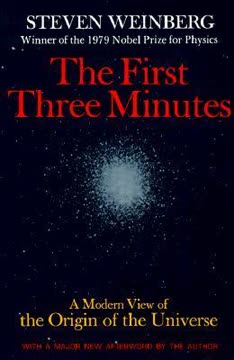

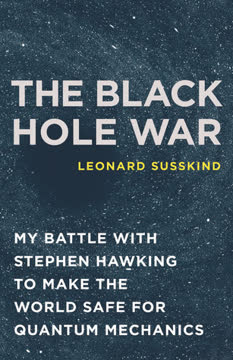
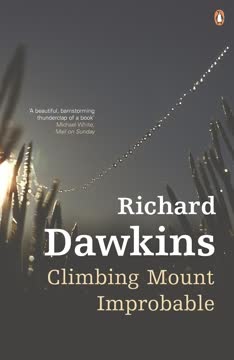
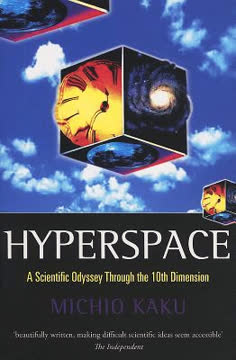
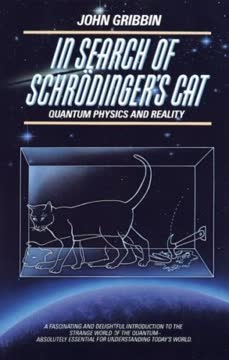
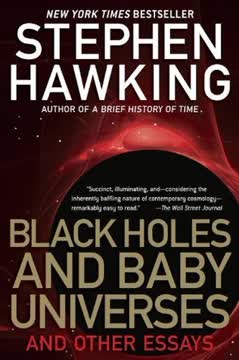

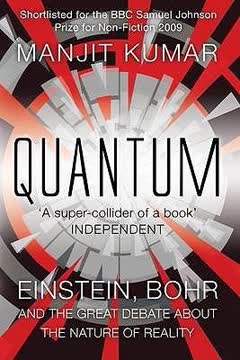
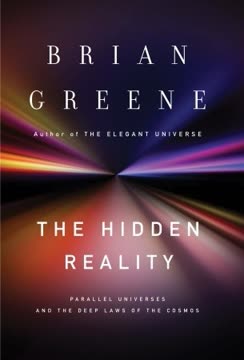
Download PDF
Download EPUB
.epub digital book format is ideal for reading ebooks on phones, tablets, and e-readers.
